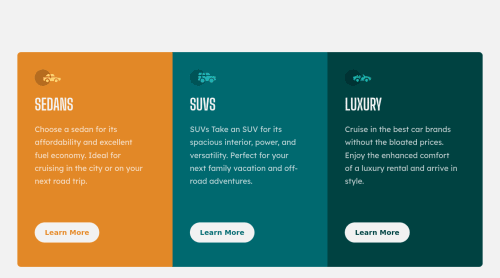Responsive card using HTML, CSS.

Solution retrospective
I didn't really had a problem with this challenge the only part that I'm unsure its about sizes, I'm not sure if it's matching the design. Any feedback is more than welcome!
Please log in to post a comment
Log in with GitHubCommunity feedback
- @PhoenixDev22
Hello Petru Banceanu,
Congratulation on completing this challenge. Excellent work! I have few suggestions regarding your solution, if you don't mind:
HTML
- About
<h1>it is recommended not to have more than one h1 on the page. Multiple<h1>tags make using screen readers more difficult, decreasing your site’s accessibility. Then swap those<h1>by<h2>.
- In this challenge, the images are much likely to be decorative. For any decorative images, each img tag should have empty
alt=""andaria-hidden="true"attributes to make all web assistive technologies such as screen reader ignore those images.
- What would happen when the user click those learn more? In my opinion, clicking those "learn more" would likely trigger navigation not do an action so button elements would not be right. So you should use the
<a>. For future use , it's a good habit of specifying the type of the button to avoid any unpredictable bugs.
- Don't capitalise in html, let css text transform take care of that. Remember screen readers won't be able to Read capitalised text as they will often read them letter by letter thinking they are acronyms.
- Adding
rel="noopener"orrel="noreferrer"totarget="_blank"links. When you link to a page on another site using target=”_blank” attribute , you can expose your site to performance and security issues.
Aside these, great work on this one. hopefully this feedback helps.
Marked as helpful - About
Join our Discord community
Join thousands of Frontend Mentor community members taking the challenges, sharing resources, helping each other, and chatting about all things front-end!
Join our Discord